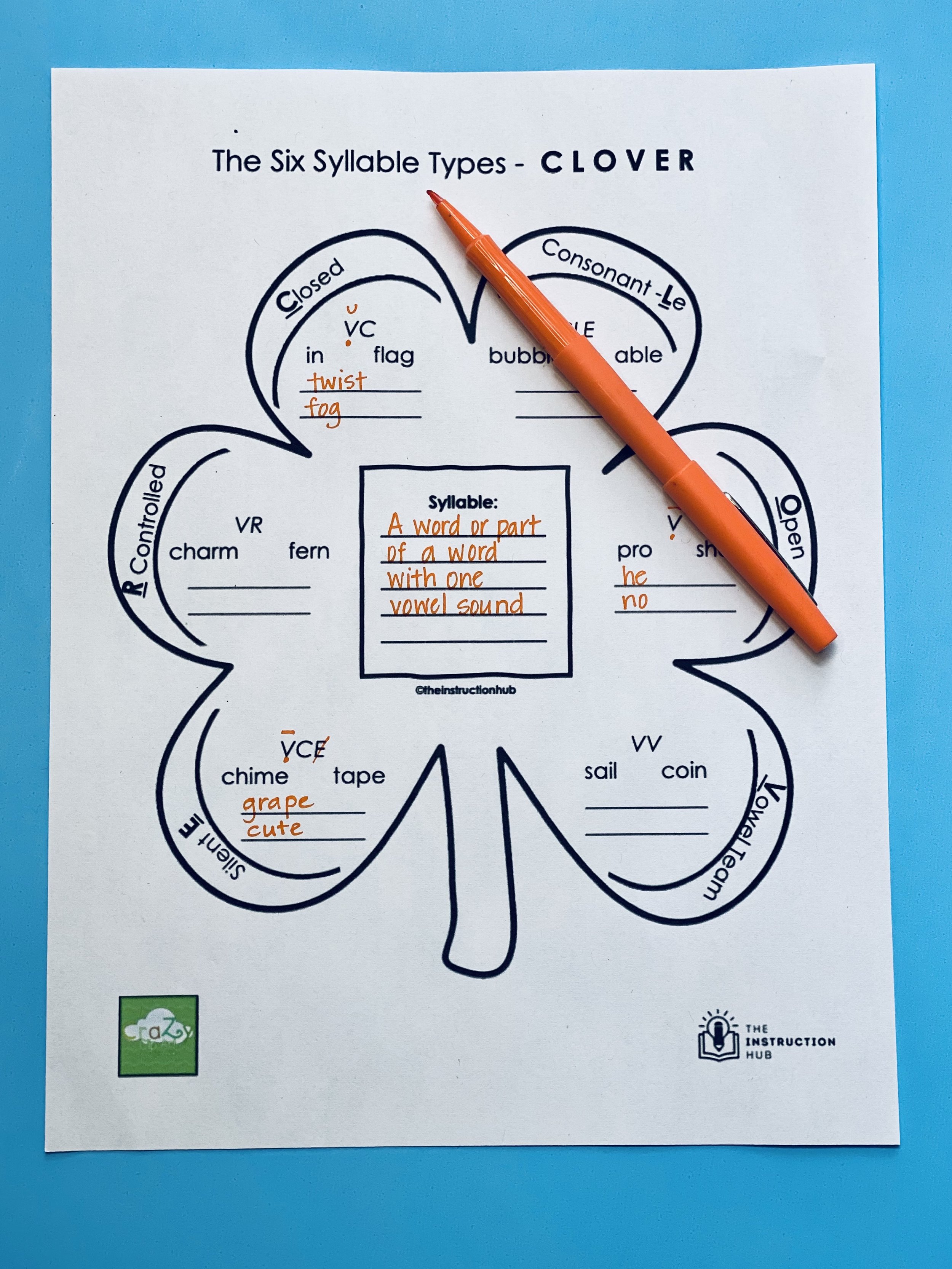Tips for Teaching a New Syllable Type
By providing direct, explicit, and systematic instruction of the syllable types to students, you give them a tool to read/spell previously inaccessible words. The predictability of our language lends itself to syllable instruction. Do I only teach syllables? No, I also teach morphology to all of my students. However, syllabication is an excellent tool for reading and spelling. It is not the only tool for spelling, but it provides a good foundation. Teaching the patterns of syllables supports the learner in understanding if the vowel will be long, short, or unexpected.
The Importance of Teaching the Pattern of the Syllable Type:
I focus on the pattern that will be found in the syllable type. I guide my students to find the vowel placement first, and from there look for the pattern. Based on the position of the vowel, you can determine if it will be long, short, r-controlled, or a diphthong. Another reason to emphasize the patterns is that as the syllable type becomes more complex, students have a growing skill set to work with them. For example, when students learn a closed syllable, they learn the pattern VC (vowel-consonant). When they encounter an r-controlled syllable, they will notice a vowel followed by a consonant. However, if they are taught that this syllable type has a vowel (or at times vowel pair) followed by an r is r-controlled, the student will be able to differentiate the VR pattern (although r is a consonant) is different than VC for a closed syllable.
Now to the steps I emphasize. I try to implement the I do, We do, You do approach.
Now to the steps I emphasize. I try to implement the I do, We do, You do approach.
I begin by linking back to previous learning. This is a great time to check for understanding to make sure the student knows the difference between vowels and consonants. Next, I remind the students of the definition of a syllable: a word, or part of a word, with one vowel sound. I like to use the C.L.O.V.E.R graphic organizer to help students organize this information. You can grab a free copy here!
If the student has learned previous syllable types, I would remind them of those here by reviewing them on the C.L.O.V.E.R.
I then provide the definition, or as I like to call them, checkpoints of the new syllable type. This will include the pattern of the syllable type. Again, having concise language to support the student in learning and looking for the pattern of the new syllable type will be helpful.
Next, provide a model or example of the syllable. I would model how I located the vowel and then noticed the position of the vowels (and consonants). I would discuss the pattern and the vowel sound, have my students dot the vowel, or if needed use a colored pencil to highlight the vowel.
Then I would provide a few examples that we could practice together: the “we do” part! The student would find the vowel, identify the pattern, and code the syllable. I would then have them read each example aloud.
In order to give them supervised but independent practice, I provide a new information/introductory page. There are a few examples of the syllable type on the page. The student will find the vowel, analyze the pattern, and code the vowel if needed. Reading the examples would be the next step. If they are not confident, I can provide immediate support. This also serves as an informal assessment of whether the learner understands the steps.
Since reading and spelling go hand in hand, I would then provide the opportunity for the student to practice spelling examples of the syllable.
The single word is followed by sentence level practice with example sentences to read and spell that includes the new syllable type. Another portion of the Orton-Gillingham lesson is the oral reading. When teaching a new syllable type, I make sure to have an oral reading option that will emphasize the new learning.
A recap of new learning is absolutely necessary! We want to help the students file the new learning so they will hopefully be able to retrieve it efficiently for the next lesson and future learning. I like to use the C.L.O.V.E.R as my recap. I have the student fill in the new syllable type, the pattern, and a few example words.
If you need a resource for teaching the syllable types, you can find that in my book Once Upon a Phonogram. The pages in this post are from the book. Please note the format and content are protected by copyright.
Thank you for reading! If you have any questions, please leave them in the comments!
This information is the intellectual property of ©2022 The Instruction Hub. Do not use or repurpose without expressed permission from The Instruction Hub. Please give The Instruction Hub an attribution if you choose to use, reference, or quote/paraphrase copyrighted materials. This includes but is not limited to blogs, social media, and resources.




